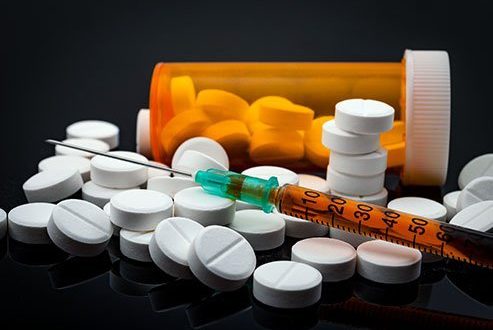More than one million kits containing the lifesaving medication naloxone, used to reverse opioid overdoses, have been shipped to registered sites throughout the province since the inception of the Take Home Naloxone program in 2012.
“Far too many people continue to lose their lives to toxic, illicit drugs – it is tragic and unacceptable,” said Sheila Malcolmson, Minister of Mental Health and Addictions. “Naloxone is an important tool that saves thousands of lives, but we know it is only one of many tools that is needed. B.C. is working from every angle to create a system of care that supports everyone, including expanding access to safer supply, working toward decriminalization, and increasing treatment options. We know there is much more to do and we are making the necessary changes needed to turn this crisis around.”
While naloxone has helped avert many deaths, those working in the field and people with lived and/or living experience of substance use emphasize that overdoses are preventable and naloxone is not enough.
“Naloxone is a life saving tool for sure, but it is not enough,” said Jessica Van Norren, a program manager with Rain City Housing & Support Society who advises BCCDC as a person with lived or living experience of substance use through the Peer2Peer program. “Five years into the overdose crisis and we are still losing our friends, family and colleagues at unprecedented numbers. I have responded to hundreds of overdoses, and all but one has been reversed. In a time of a poisoning epidemic, and now benzos now being in our substances, naloxone is not enough.”
When fentanyl entered the drug supply and the public health emergency was declared in 2016, the Take Home Naloxone program ramped up. A policy change removed the requirement to have a prescription to get a kit and the program expanded to community sites and pharmacies, improving access to training and kits throughout the province. People with lived and/or living experience took on a critical role in distributing naloxone. They continue to be on the frontline as first responders saving the lives of friends, loved ones, and community members.
Today, there are more than 1,860 distribution sites throughout B.C. and a record 272,000 kits were shipped in 2020. Mathematical modeling shows that naloxone averted more than 3,000 death events between January 2015 and March 2021.
“The Take Home Naloxone program has been a crucial component of the emergency response to the overdose crisis and I’m proud of our partners and community members for their dedication to get this life-saving medication into the hands of people who need it,” said Dr. Jane Buxton, harm reduction lead for the BC Centre for Disease Control (BCCDC). “While we can acknowledge naloxone distribution has contributed to saving many lives, people continue to die from a toxic, unregulated drug supply. Opioid overdose deaths are preventable and unacceptable.”
Despite improved access to naloxone and its effectiveness in reversing overdose, B.C. is currently experiencing the highest rate of overdoses to date. In 2020, approximately five British Columbians died each day from fatal overdose.
To highlight the perspectives of those who are experiencing this crisis in a very real way, people with lived experience who are part of PEEP and Peer2Peer, organizations that advise BCCDC, have written letters explaining what this milestone means to them. The letters explain why naloxone is not enough and point to other necessary and effective strategies such as safer alternatives to the toxic drug supply.
“I believe naloxone is not enough, it does save lives but it’s only an afterthought, a band-aid solution, we have to focus on preventing overdoses, and the only solution I feel, is safer supply. Offer folks many options, in order to be able to meet people where they are at, if we decriminalize all substances and make substance misuse a medical issue, not a criminal one, more people would get the care they need,” wrote Paul, a member of PEEP, in one of the letters.
Twelve letters have been written and are available on the Toward the Heart website. They will also be shared on social media.
Learn More:
- Take Home Naloxone program and training information
- Infographic of the Take Home Naloxone program
- Find a naloxone distribution site or other harm reduction supplies with the site finder.
- Community-based non-profit agencies seeking naloxone for use by staff may be eligible for the Facility Overdose Response Box program.
 Desi Today Magazine
Desi Today Magazine




